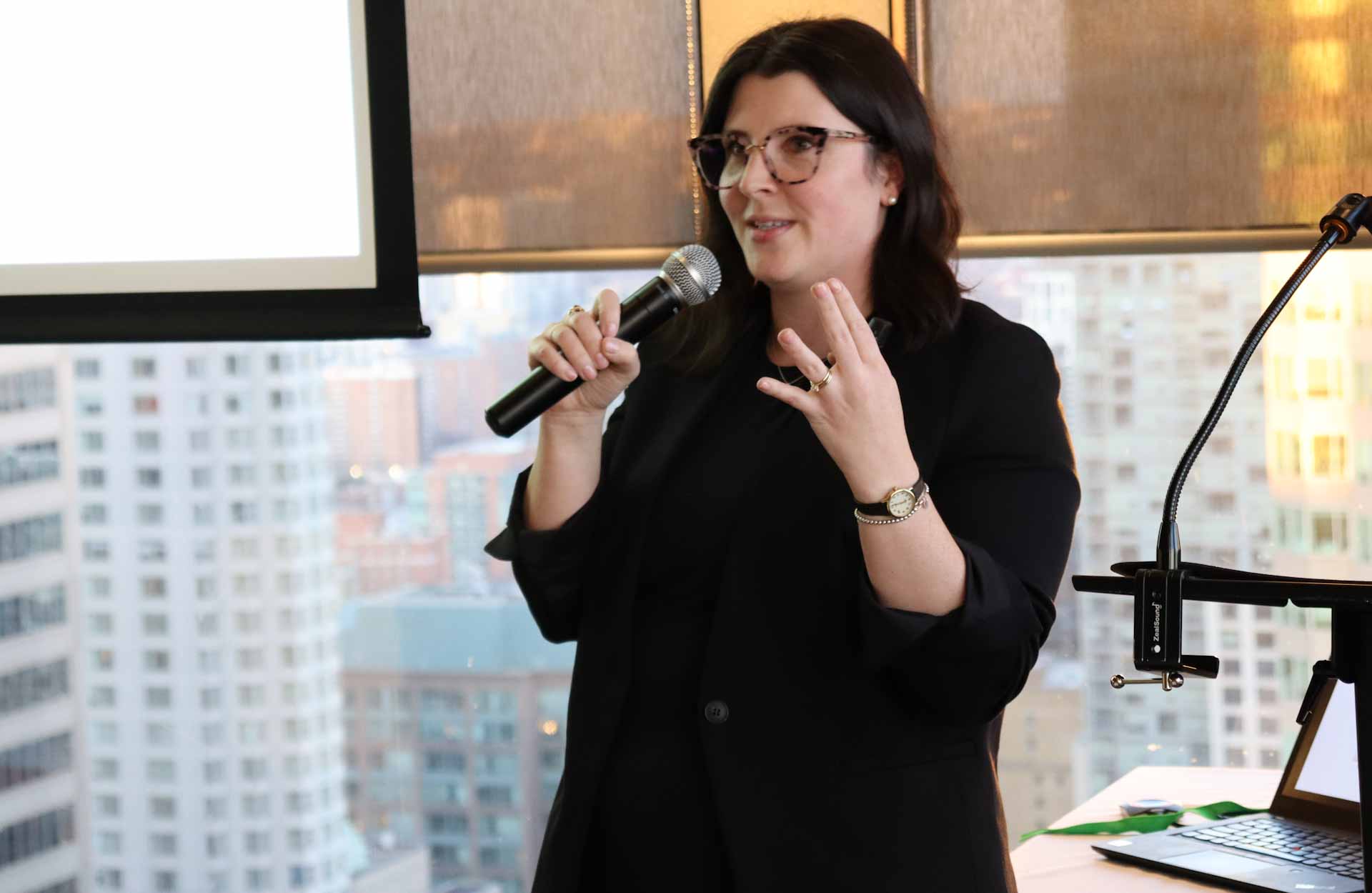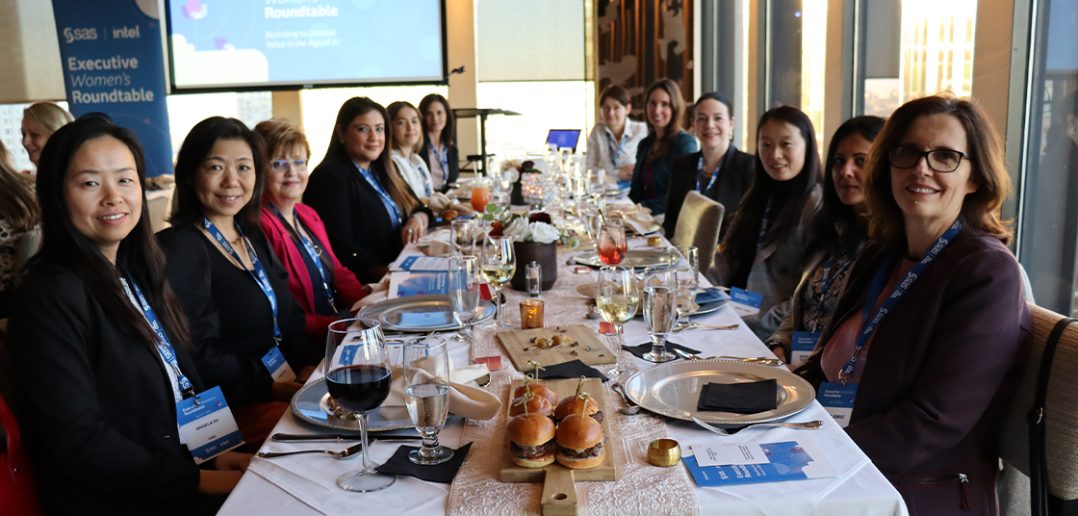The Co-Founder of Ladies Learning Code and Canada Learning Code talks about strides in Canadian computer science education, AI, the future of coding, and more.
Companies use many legacy processes to empower their employees, and that's just one of the many barriers employees face in the workplace. Organizations that prioritize reskilling and continually invest in their employees ensuring technology is changing roles rather than displacing them, are the ones that find success.

These were just some wise words that Melissa Sariffodeen, Co-Founder of Ladies Learning Code and Canada Learning Code, shared during her keynote at the Women's Executive Roundtable in Toronto in March. Ladies Learning Code and Canada Learning Code help prepare people to work in jobs in the tech industry and create them. Melissa says she has seen people develop these skills, allowing them to harness the power of technology and the future.
We were able to sit down with her recently and dig deeper into reskilling and the future of coding.
What are the most effective ways leaders and organizations can reinforce, from the bottom up, a focus on curiosity?
Sariffodeen: Maybe the most important thing is that we look at least at what's happened in organizations that have struggled, and we only know what's happened—we don't know what will happen. One of the main things across the entire organization, but especially with leadership, is building that culture, a strong sense of integration, and ownership to figure out those problems and make the transition.
You want to get it right. So, every part of your organization should have the ability or desire to challenge and be critical. Different perspectives build teams that have different perspectives. You might not get it right, and we might not have always done it that way, but you will get it right. You will figure it out. Building that shared ownership is probably the easiest step to take. It's easier said than done, but you must be open and willing to work to get it right.
But whenever I reflect on workplaces, we're not often there, even in my own experience. You stop challenging. That's the main takeaway and I would encourage folks to think about it.
What are Ladies Learning Code and Canada Learning Code doing to help address the current strain on the talent market?
Sariffodeen: We talk a lot about helping people boost or advance their careers and see themselves in this space. There is a shortage, and hundreds of thousands of roles are unfilled. So how do we help people make the jump and rescale, whether in existing organizations or for the Canada Learning Code?
We really focus outside of organizations. We work with organizations and partners, but we think about supporting the most underrepresented, equity-deserving groups that may be in a small company. They may be in a retail role or whatever it might be.
And, you know, just helping create those pathways, that's our big focus—with this consortium of partners, or this ecosystem, assisting people to see themselves in these roles and being in a retail or customer service role and being able to make that transferable leap into maybe a tech-enabled customer service role.
The other thing that I've seen, and this is more from my experience on different advisory councils, is under-investment relative to our G7 peers in training. There's still a lot of legacy around hiring, credentialing and trying to figure out how we break down rules. You know, more agility or fluidity in skills means hiring more for competence than experience. So I still think there's a lot of room there to try to be a little bit more agile and responsive to that.
There's lots of folks who are looking for work or are interested in investing in upskilling. How do we get more people to be interested, and then those that are interested but need a different skill set? How do we figure out what they have and what's transferable and be able to move them into a pathway with an ecosystem of partners?
Years ago, you said in an interview that you wanted to emphasize coding more in school curriculums. Where are we on that journey today?
Sariffodeen: That is some work we've been really active on in the last five or six years. When we would go into classrooms across the country, maybe five, six, seven, eight years ago, we'd ask students, “Raise your hand if you've coded,” no one would put their hand up, or a couple of kids would. Now, you go into classrooms and everybody does.
As an organization, we decided this year to no longer go into classrooms. We'll support teachers, but because we have seen computer science in the curriculum over this period, almost every province and territory in some way is in K-to-12. It always had some presence in high school as an elective. But we're now seeing it in Grades 1 through 8, and some heuristics, some in a much deeper way.
For example, Nova Scotia and New Brunswick are quite heavy there. Ontario, starting next year, will be starting as early as kindergarten. That's driven a lot by organizations like Canada Learning Code, with peers, industry, academia, and the ministries of education building the K-to-12 computer science framework.
The Canadian framework outlines trajectories for whatever students should learn from K to 12 concerning the five computer science domains. It's not just coding and hardware. There's data. There's design. And then, really importantly, there's the social impact of technology. That's where ethics and some of these pieces come in.
So, we've made a lot of progress, which is, I think, kind of a testament to the work in this space and also to governments of all types, and industry especially, who've been advocating and pushing the government to say, “This is something that we need people in Canada to learn in a meaningful way.”
How will the current wave of generative AI and natural language processing tools impact the coding community?
Sariffodeen: I quite like them because I think what generative AI (GenAI), ChatGPT, did was help create a language that everybody is using and bring this to the forefront of the conversation. The first step is having a common language, especially with technical things, and we're closer to that than ever.
And that's what the most exciting thing about ChatGPT was. Let's say it is not really the technology because we've had it for decades. But it's the adoption of the technology.
For folks like me, that's awesome. We don't have to do the work to get people to associate these things with code or not to see it as, like, I Robot. It feels like something more empowering.
We were thinking about when computers would code themselves in 2016 and 2015 when we first started teaching AI. We're also excited about that because it means that we can now do things that are less like that, less administrative, or less repetitive. We can focus on wielding technology in more interesting ways.
We still think that teaching coding will be important because it teaches an underlying way of thinking that is strong and very committed. Even if we don't do the coding in-depth, you need enough information or knowledge to ask the right questions, like a prompt engineer. If you don't know enough to ask the right questions, your results are not going to be as good as they could be.
So, it's not about having a deep proficiency. And we have yet to really advocate for that. It's just about understanding the basics like we would teach science or math. Not everyone's going to be a mathematician. It's so that you have enough knowledge to navigate the world and, you know, go to the grocery store and figure out if you have the budget to buy your groceries. It's not so that we all do immense proofs on our blackboard.
I think even in a no-code world, there's still code.

